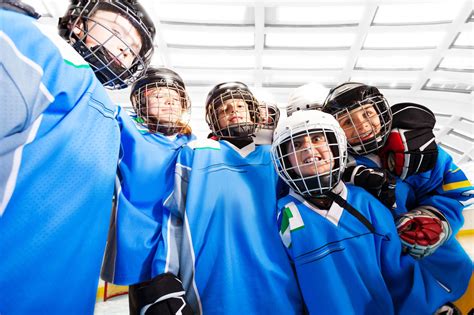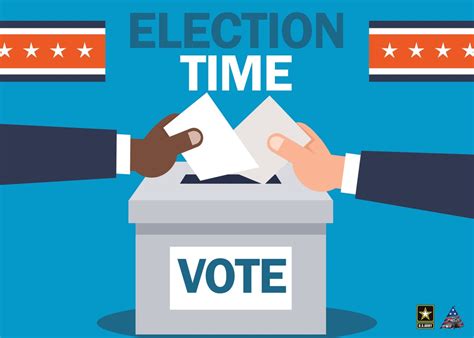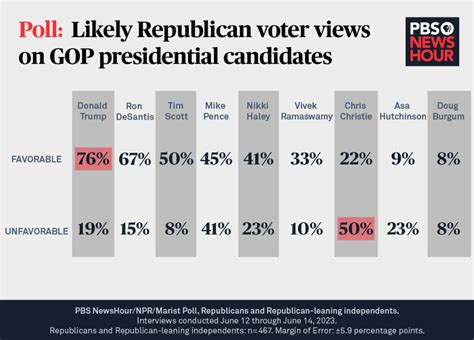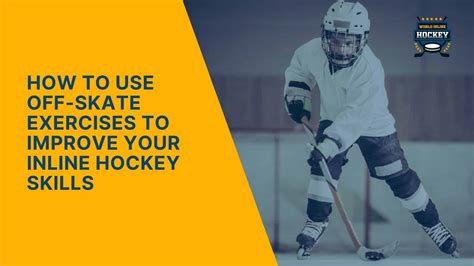Explore the crucial aspects of concussions in hockey, including symptoms, preventive measures, long-term effects, and the importance of education for players and coaches.In the fast-paced world of hockey, the thrill of competition often overshadows a crucial health concern: concussions. These traumatic brain injuries can significantly affect players’ long-term health and performance. As the sport evolves, understanding the ramifications of concussions is essential for athletes, coaches, and fans alike. In this article, we will delve into the multifaceted impact of concussions in hockey, from recognizing symptoms for timely intervention to exploring preventive measures that can protect players on the ice. We’ll also discuss the long-term consequences of repeated head injuries, emphasizing the importance of education and awareness within the hockey community. By shedding light on these critical issues, we aim to foster a safer environment for players and ensure that the love for the game does not come at a cost to their health.
Understanding Concussions: The Impact On Players’ Health
Concussions are a significant concern in hockey, as they can lead to serious and lasting damage to players’ health. Understanding the impact of concussions requires an appreciation of both the immediate effects and the long-term consequences that can arise from these injuries. When a player sustains a concussion, they may experience various symptoms, such as headaches, dizziness, and cognitive difficulties, all of which can impair their performance and overall quality of life.
Research indicates that players who have experienced concussions are at an increased risk for developing neurodegenerative diseases later in life. This underscores the necessity of taking precautions and implementing strategies that address the impact of head injuries in hockey. The health consequences can be profound, affecting a player’s mental well-being and social interactions, as well as leading to conditions such as chronic traumatic encephalopathy (CTE).
| Short-Term Effects | Long-Term Effects |
|---|---|
| Headaches | Chronic migraines |
| Dizziness | Balance issues |
| Nausea | Cognitive decline |
| Confusion | Emotional instability |
In light of these findings, it is crucial for coaches, players, and medical staff to work together to monitor, manage, and mitigate the impact of concussions. Ensuring that players have access to medical evaluations and adhere to return-to-play protocols can help protect their health and promote a safer playing environment.
Recognizing Concussion Symptoms: Early Detection Is Crucial
Concussions have a profound effect on players, and recognizing the symptoms early can significantly reduce the impact on their health and performance. It’s essential for coaches, players, and medical staff to be vigilant in identifying these symptoms right away.
Some common symptoms of a concussion include:
- Headaches or a feeling of pressure in the head
- Confusion or feeling as though in a fog
- Memory loss (especially surrounding the incident)
- Dizziness or balance problems
- Light sensitivity or blurred vision
- Nausea or vomiting
- Slurred speech
- Difficulty concentrating or remembering
It’s important to note that symptoms may not appear immediately after the injury. Delayed response can lead to complications and more severe outcomes. If a player demonstrates any of the above symptoms, it is critical to take immediate action:
- Remove the player from the game or practice to prevent further injury.
- Seek medical evaluation promptly to determine the severity of the concussion.
- Follow a prescribed recovery plan that may involve physical and cognitive rest.
Recognizing concussion symptoms early plays a vital role in minimizing the impact of these injuries on hockey players. Increased awareness and prompt response can be a game-changer in ensuring the long-term health and safety of athletes.
Preventive Measures: Mitigating The Impact Of Concussions In Hockey
Preventive measures are essential in mitigating The Impact of concussions in hockey. As awareness around the dangers of head injuries has increased, various strategies and protocols have been developed to safeguard players at all levels. Here are key measures that can help reduce the occurrence and severity of concussion-related injuries:
- Education and Training: Coaches and players should receive ongoing education about the risks associated with concussions, including recognizing symptoms and the importance of proper reporting. Understanding the signs can lead to earlier intervention.
- Use of Proper Equipment: Ensuring that players wear appropriately fitted helmets that meet safety standards can provide significant protection against head injuries. Helmets should be free of defects and regularly checked for wear and tear.
- Concussion Protocols: Implementing strict concussion management protocols can help in the identification and treatment of concussions. This includes mandatory baseline testing and a step-wise return-to-play approach.
- Focus on Safe Play: Promotion of safe playing techniques and rules that discourage dangerous play can help reduce the risk of head injuries. This includes educating players on how to avoid risky collisions.
- Improving Awareness Among Fans: Engaging fans in concussion awareness campaigns can create a supportive environment for players to prioritize their health over competitiveness.
By adopting these preventive measures, the hockey community can work together to reduce The Impact of concussions and protect the health and safety of all players involved.
Long-Term Consequences: The Hidden Impact Of Repeated Head Injuries
The hidden long-term consequences of repeated head injuries in hockey can be profound and far-reaching. Athletes who sustain multiple concussions may experience a range of neurological and psychological issues that can significantly impact their quality of life. Understanding these potential ramifications is crucial for players, coaches, and caregivers alike.
One of the most concerning long-term effects is the increased risk of developing chronic traumatic encephalopathy (CTE), a degenerative brain condition associated with repeated head trauma. Symptoms of CTE can include memory loss, mood swings, depression, and heightened irritability. Over time, these symptoms may worsen, leading to severe cognitive decline.
Additionally, players may face heightened risks of other neurological disorders, such as Alzheimer’s disease and Parkinson’s disease. The cumulative effect of multiple concussions can lead to a situation where an individual experiences prolonged migraines, sleep disturbances, and difficulty concentrating, all of which interfere with daily life.
Beyond the physical risks, the psychological toll can be equally significant. Many athletes report experiencing anxiety and depression after suffering head injuries, with some even dealing with post-traumatic stress disorder (PTSD) related to their experiences on the ice. The pressure to return to play can exacerbate these issues, leading to a cycle of risk and mental health challenges.
In light of these serious concerns, it is imperative to advocate for better safety protocols and awareness surrounding the impact of concussions in hockey. Through enhanced education, stricter regulations, and an open dialogue about health, stakeholders can take proactive steps to safeguard the well-being of players both on and off the ice.
Educating Coaches And Players: Reducing The Impact Through Awareness
One of the most essential strategies for addressing The Impact of concussions in hockey lies in effective education for both coaches and players. Empowering these individuals with knowledge can significantly contribute to minimizing the risks associated with head injuries.
The first step in this educational initiative should involve comprehensive training programs that outline what concussions are, their symptoms, and potential long-term effects. Coaches should be trained to recognize the visible signs of a concussion and understand the appropriate protocols for response. This training is crucial in creating a safe playing environment where the well-being of athletes comes first.
Additionally, educating players on how to protect themselves on the ice plays a vital role in prevention. This involves fostering an understanding of safe playing techniques and the importance of wearing proper protective equipment. When players are aware of the risks and the protective measures available, they are more likely to adopt safer practices during games and practices.
Moreover, holding regular workshops that involve both coaches and players can strengthen communication and awareness about The Impact of concussions. These sessions can be platforms for discussing real-life cases, sharing experiences, and differentiating between normal on-ice feelings and symptoms indicative of a concussion.
Incorporating resources like pamphlets, videos, and seminars can further reinforce the importance of concussion education. By making these resources readily available, teams can create an ongoing dialogue about concussions, ensuring the topic remains at the forefront throughout the season.
With informed coaches and vigilant players, the hockey community can take significant steps in reducing the immediate and long-term effects of concussions, thereby enhancing player safety and promoting a culture of awareness in the sport.
Frequently Asked Questions
What is a concussion and how does it occur in hockey?
A concussion is a type of traumatic brain injury caused by a blow to the head or body that results in the head moving rapidly. In hockey, concussions often occur during body checks, collisions with other players, or falls.
What are the common symptoms of a concussion?
Common symptoms of a concussion include headaches, confusion, dizziness, nausea, balance problems, sensitivity to light or noise, and difficulty concentrating or remembering.
Why are concussions particularly concerning in the sport of hockey?
Concussions are concerning in hockey due to the high-speed nature of the game, the physical contact involved, and the risk of repeated injuries, which can lead to long-term health issues, including chronic traumatic encephalopathy (CTE).
What steps can players take to prevent concussions?
Players can reduce the risk of concussions by wearing properly fitted helmets, adhering to safe playing techniques, being aware of their surroundings to avoid collisions, and following the rules of the game.
How can coaches and trainers help players who may have suffered a concussion?
Coaches and trainers should educate players on recognizing concussion symptoms, enforce zero tolerance for head hits, and ensure that any player showing signs of a concussion is immediately evaluated and does not return to play until cleared by a medical professional.
What should be the protocol for a player suspected of having a concussion during a game?
The protocol should include immediate removal from the game for evaluation, a thorough assessment by a medical professional, and a step-wise return-to-play protocol that ensures the player is symptom-free before resuming full activities.
What long-term effects can concussions have on hockey players?
Long-term effects of concussions can include cognitive impairments, chronic headaches, mood disorders, and an increased risk for conditions like CTE, which can lead to severe neurological issues later in life.









